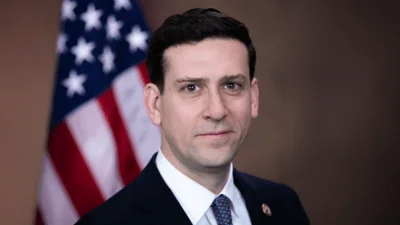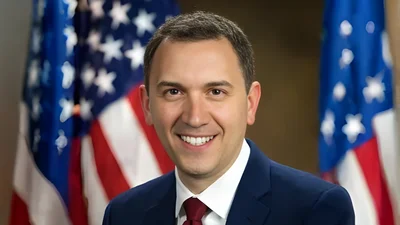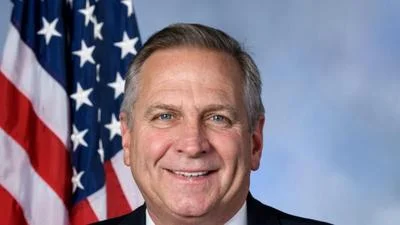U.S. Deputy Secretary of Commerce Bruce Andrews delivered keynote remarks at the 9th Annual Global Infrastructure Leadership Forum hosted by CG/LA, a strategic partner of the Department’s International Trade Administration. In his remarks, Deputy Secretary Andrews highlighted the Department’s efforts – including the Global Infrastructure Initiative and support for Smart Cities growth – to maximize U.S. competitiveness in infrastructure development.
The Global Forum features and hosts 400 high-level industry executives and the top 50 global infrastructure projects and their sponsors from every region of the world, representing over $300 billion in total project value.
Remarks As Prepared For Delivery Thank you, Norm Anderson, for the kind introduction and for you and your team’s hard work in hosting this 9th iteration of the Global Infrastructure Leadership Forum. CG/LA is an important strategic partner for the Department of Commerce. I am honored to speak today about the role our Department plays in the global infrastructure landscape and how we help create the conditions for American companies to be competitive.
We are in the midst of an era of enormous opportunity for infrastructure investment and redevelopment around the world. Global infrastructure spending faces an annual gap of $1 trillion. And between 2010 and 2030, it is estimated that approximately $57 trillion in investment will be needed to meet the world’s growing global infrastructure needs.
Increased levels of urbanization will place significant stress on existing infrastructure and pave the way for the construction of all types of supporting infrastructure like public transportation systems. As governments around the world partner more with private industry to fulfill critical infrastructure needs, there are more opportunities for companies of all sizes. For example, during my visit to the Tbilisi Silk Road Forum in Georgia last October, I was struck by the number of infrastructure projects underway and in the pipeline.
When I met with Vice Prime Minister Kumsishvili– who is here today – and his government, I was impressed by their foresight in using their geographic location to create economic benefits for their people. Countries across the region recognize that they join their markets and create a seamless economic bloc in order see greater prosperity for all countries. But to do this, they must develop the necessary infrastructure to connect those markets and allow goods and services to move easily across the region.
We believe American companies can bring outstanding technologies, services, and expertise to this region. Indeed, just last month, we were pleased to see that the Conti Group will help develop the Anaklia Deep Sea Port in Georgia.
Given the wealth of opportunity in infrastructure globally, the Department of Commerce is piloting a Global Infrastructure Initiative, led by my colleague Jenna Pilat. We are working in close coordination with the private sector, foreign governments, and multilateral development banks in this endeavor. The Global Infrastructure Initiative pilot is focused on making U.S. infrastructure companies more competitive through: increased infrastructure project information sharing; financing assistance that leverages the capabilities of our U.S. government agency partners; and working to lower market entry barriers for U.S. companies.
To best channel our available resources, we have focused the Global Infrastructure Initiative pilot on four key markets: India, the Philippines, Mexico and Africa. For example, we have instituted Infrastructure Collaboration Platforms with India and the Philippines to give U.S. companies the opportunity to be involved with projects as early as possible. We are also addressing financing through this pilot.
To better understand the challenges around financing infrastructure globally, representatives from Commerce began engaging with New York University’s Stern School of Business to examine the financing challenges inherent in global infrastructure – and to explore what solutions may exist. The outcomes of that engagement will be released this spring.
To assist U.S. companies in navigating market access barriers, our GII also brings issues like financing to the forefront by working them into our bilateral trade negotiations and commercial dialogues. The variety of challenges U.S. companies experience when competing for infrastructure projects worldwide demonstrates a need to: continue partnering with foreign governments to share project information; examine ways in which we can innovatively provide financing assistance; and work together to increase cross-border trade and investment in the global infrastructure space. The Global Infrastructure Initiative is one way we are tackling these challenges.
The Department of Commerce is also deeply engaged in the smart cities space. As you all know, President Obama recently launched a new “Smart Cities” initiative in the United States that will invest over $160 million in federal research and leverage more than 25 new technology collaborations to help our local communities tackle key challenges. At the Department of Commerce, we are moving forward on this initiative both domestically and internationally to support U.S. companies and our foreign partners.
Let me give you a sense of the breadth of our involvement with smart cities. First, our National Telecommunications and Information Agency has invested $4 billion to help upgrade or expand broadband across the country, as well as promote digital literacy and broadband adoption. Second, the U.S. Patent and Trademark Office is ensuring that smart cities innovators have the resources they need to bring inventive concepts to life.
Next, the National Institute of Standard and Technology has created a Global City Teams Challenge – led by Dr. Sokwoo Rhee, who you heard from yesterday. This platform helps global teams develop solutions designed to address municipal challenges with smart city project proposals. In 2015, more than 60 teams participated in the challenge. And later this month, NIST will host a “Tech Jam,” where existing teams will present their project plan and identify additional partners. I encourage you to visit NIST’s website to learn more about this valuable opportunity to connect with teams around the world looking to develop smart, sustainable solutions for their cities.
Even with all of these initiatives, no bureau is more engaged in smart cities than our International Trade Administration. ITA supports American companies around the world as they engage with cities looking to increase quality of life by incorporating urban technology and sustainability measures. For example, recognizing the vast potential of the growing infrastructure market India, I brought representatives from 18 American companies with me on a smart cities trade mission there last month. The purpose of the mission was to connect these American businesses with opportunities in green infrastructure development – while introducing Indian policymakers, businesses, and urban planners to the world-class services offered by U.S. companies.
Our delegation met with industry groups in Delhi, participated in the 3rd Smart Cities Summit in Mumbai, and heard about the potential for smart cities in Chennai. The U.S. companies participating had the opportunity to directly engage with Indian government stakeholders and discuss the specifics of funding the special purpose vehicles for Prime Minister Modi’s 100 Smart Cities Initiative. In addition, while we were there, my friend Lee Zak – director of the U.S. Trade and Development Agency – signed a master planning grant for the city of Vizag. This grant will be implemented by a three company consortium comprised of AECOM, KPMG, and IBM. Our mission provided greater insight into the operating environment in India and the vast opportunities available for U.S. companies.
As more countries start to see smart cities as the future of urban development, our Department will continue looking for new ways to engage and support their efforts. In June, we plan to release a resource guide that highlights the spectrum of Commerce’s smart city activity, so that your firms can take better advantage of opportunities. I also invite you to attend our “Discover Global Markets: Building Smart Cities” business forum taking place this November in Chicago. Vinay Singh, who leads our efforts within ITA to coordinate Commerce activities in Smart Cities, is here today. Vinay, can you raise your hand? I encourage you to reach out to him to learn how you can leverage ITA’s existing work in the smart cities and infrastructure space.
Let me close today with this: Cities all over the world – from New York to Manila, from Sao Paolo to Berlin – are growing at a tremendous rate. The decisions countries make today about how to handle that growth will have huge implications on the future of the global economy. We are at a unique point in global development where there is a tremendous need for smart infrastructure. The solutions being developed by some of the people in this room today represent the future of urbanization, technology, and sustainability. Our message to cities and countries all over the world is simple: the U.S. Government and the American business community stand ready to partner with you. Working together, we can create truly 21st century cities and regions. Thank you.
Source: U.S. Department of Commerce








